THE HARMONY OF TANZANIA
By Dustin O’Regan
Interior of tent at Serengeti Pioneer Camp. Photography by Enrico Constantini
By Dustin O’Regan
Interior of tent at Serengeti Pioneer Camp. Photography by Enrico Constantini
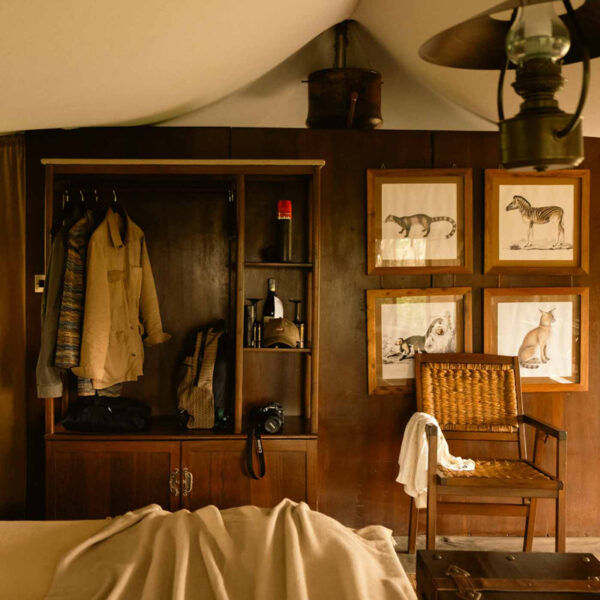
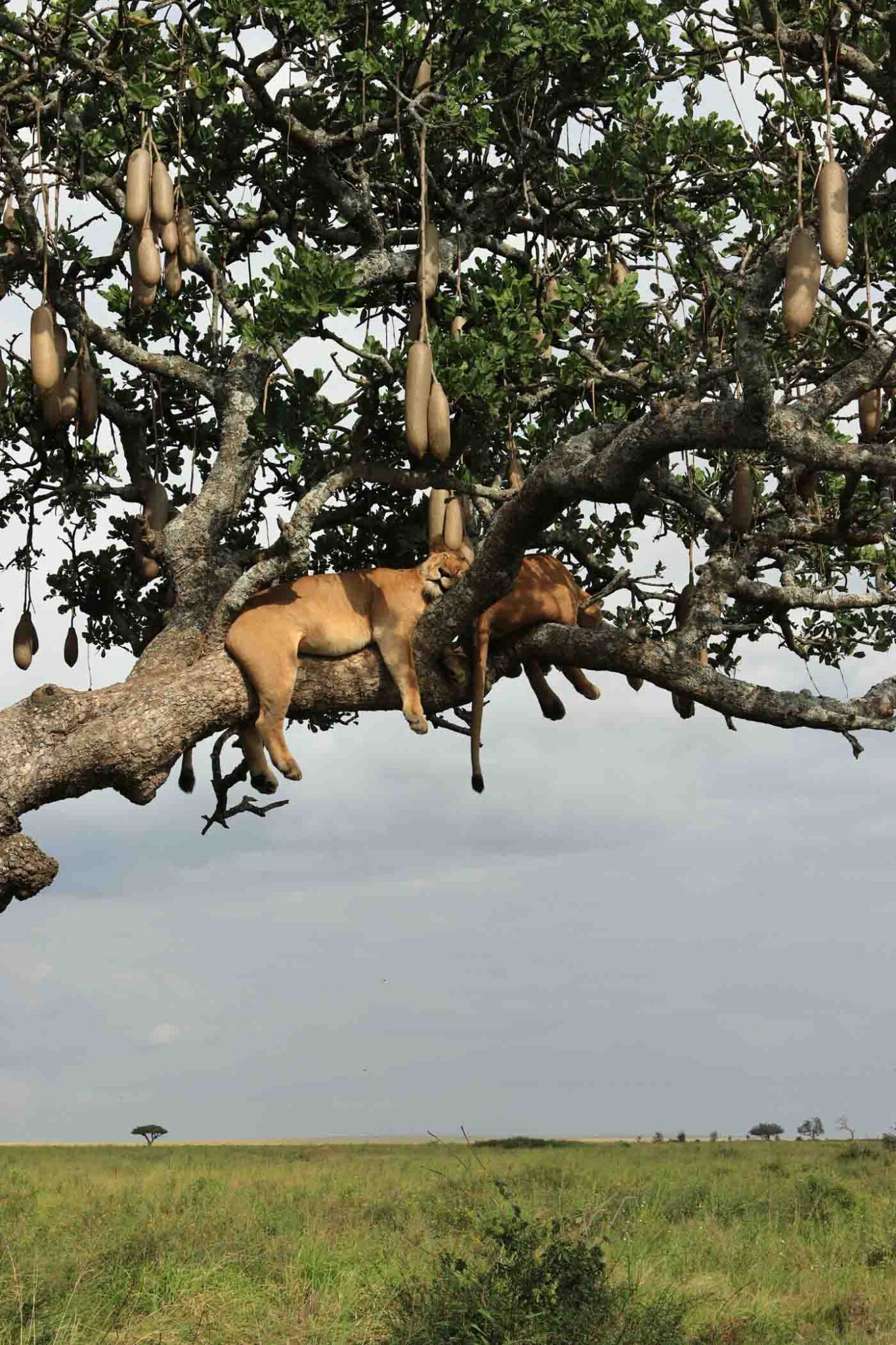
Tanzania stirs the soul in ways both quiet and grand. Harmony hums through the land, where animals move with quiet ease. From the continent’s tallest peak to the planet’s largest intact caldera, Tanzania enthralls and enchants.
This East African country doesn’t whisper its beauty—it roars. However, what stays with you isn’t just the scale of the country’s otherworldly landscape—it’s the rhythm. Everything working together to perform a seamless, choreographed dance.
The stars of this performance? Every creature, great and small. Harvester ants clean the bush and aerate the soil. Elephants forge paths others follow. Oxpeckers ride buffaloes, plucking parasites. Termites build microhabitats that sustain aardvarks. Hyenas ensure nothing goes to waste.
There’s a staggering efficiency to it all—no role too small, no gesture without meaning. This raw, seamless balance is just one of the things that took our breath away.
We traveled with Elewana and SkySafari, traversing the country by private plane—trading hours on the road for deeper moments in the bush. It was an awe-inspiring journey experienced in tandem with luxurious accommodations and unrivaled service.
Timing shapes every journey, so when dreaming of a Tanzanian sojourn, it helps to understand the seasonal differences. The dry season (June to October) offers crisp air and clear views—animals congregate at shrinking waterholes and sightings come easily. But the green season (March to May) reveals another kind of magic; the landscape awakens in full color, grasses ripple across the plains, and blossoms spill like confetti.
Our adventure, which began in May, meant we would encounter this latter, rain-kissed landscape.
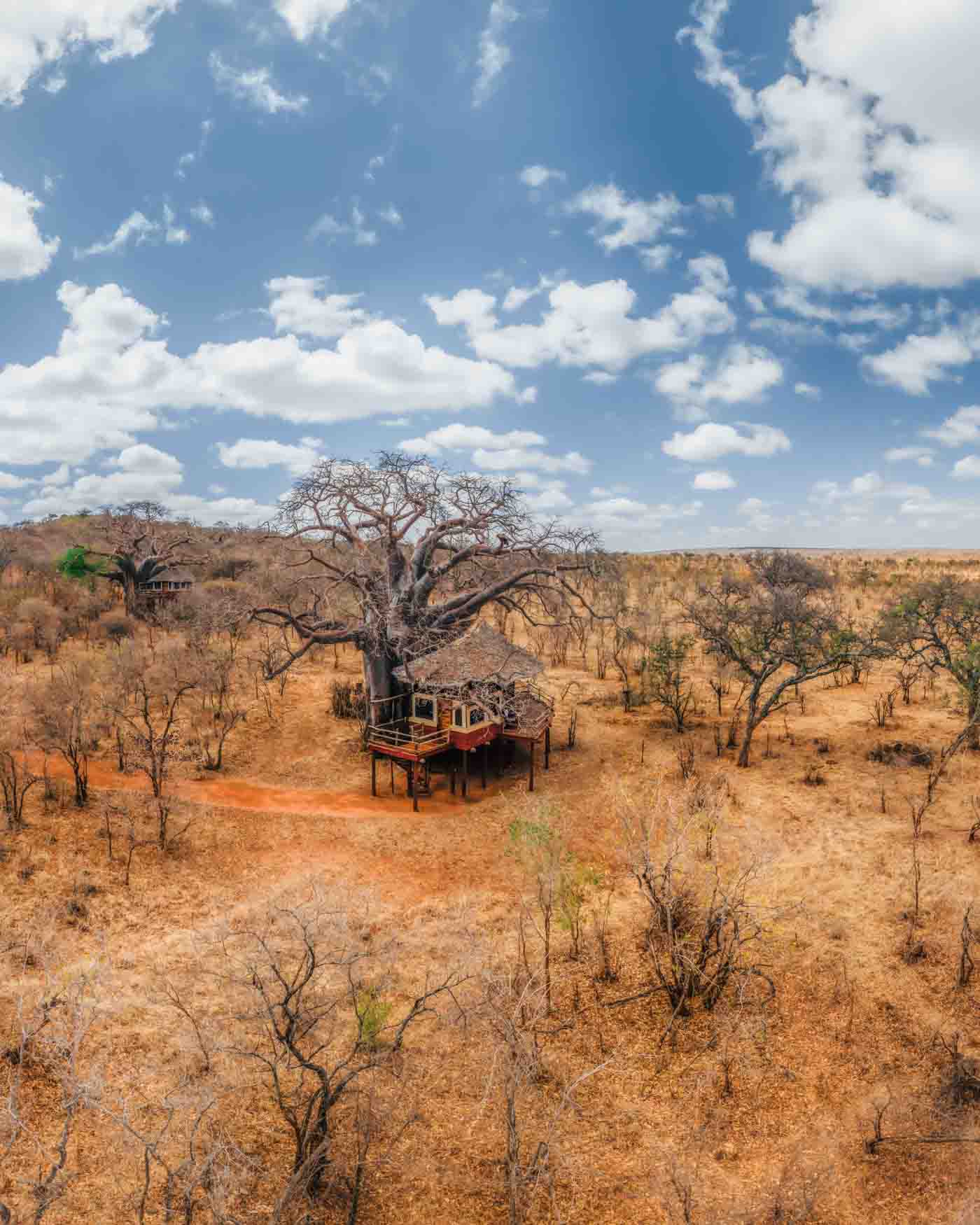
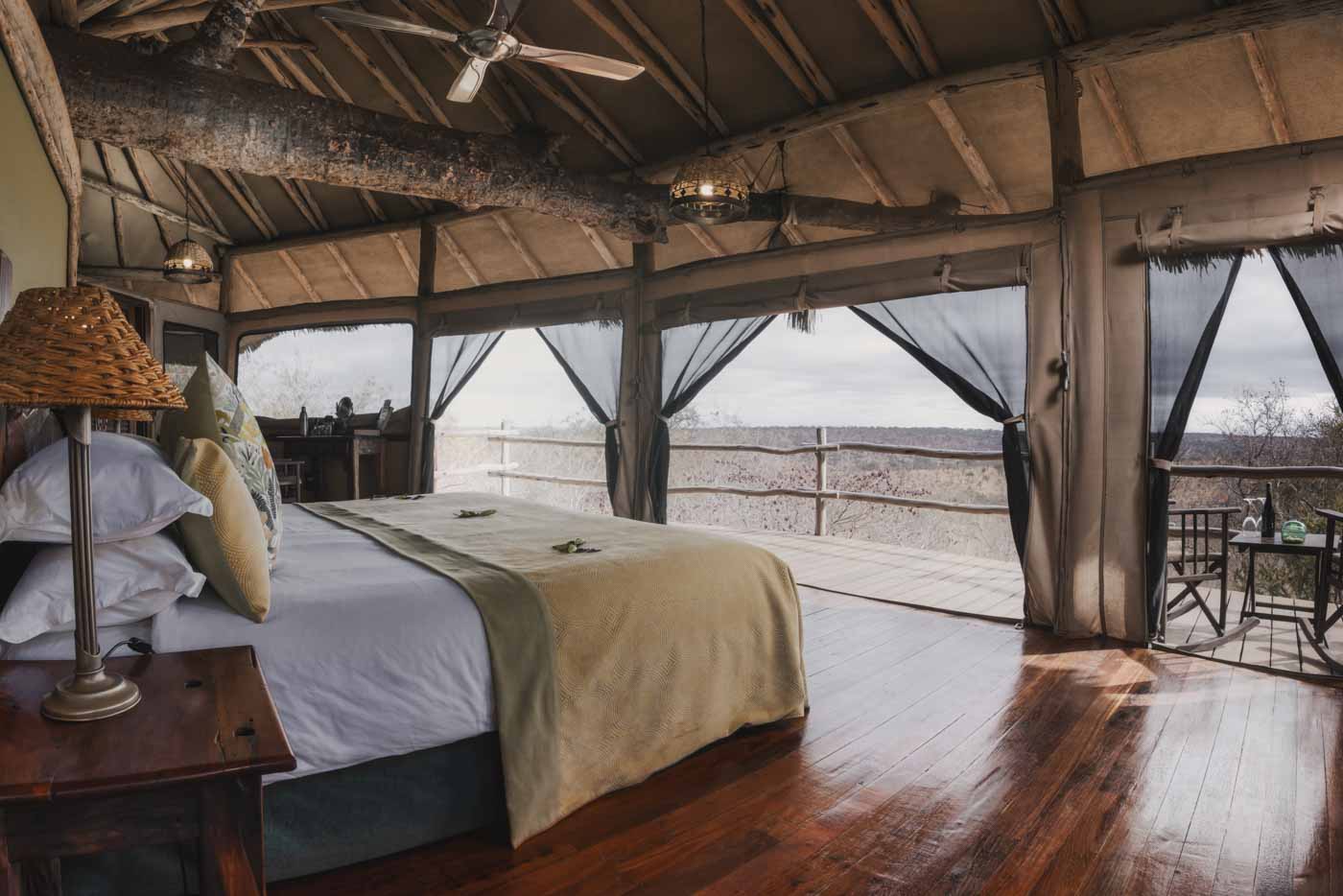
Our journey unfolded under the watchful eye of Mount Kilimanjaro, nestled in the foothills of Mount Meru. After a fast-tracked arrival at Kilimanjaro International Airport, we were whisked away to Elewana Arusha Coffee Lodge—an oasis tucked within a working coffee plantation. Lush, leafy, and aromatic, the property offered a serene welcome to Africa—an ideal place to ease into Tanzania’s relaxed rhythm.
Our suite—a luxurious wooden chalet—exuded East African warmth. At its heart, a white-canopied bed framed in rich dark wood felt lifted from the pages of a fairytale.
Be sure to sign up for the coffee tour—it is a fascinating, detail-rich experience. A quick note: in Swahili, the word for “coffee” means “slap,” so best to ask for a “kahawa” instead. Both wake you up—one is just a more pleasant start to your day!
Another must-visit is Shanga, a heartwarming workshop employing Tanzanians with disabilities. There, we tried our hand at making bracelets, crafted shopping bags from recycled newspapers, and attempted to blow glass (we left that to the pros—who impressively produce more than 100 glasses a day).
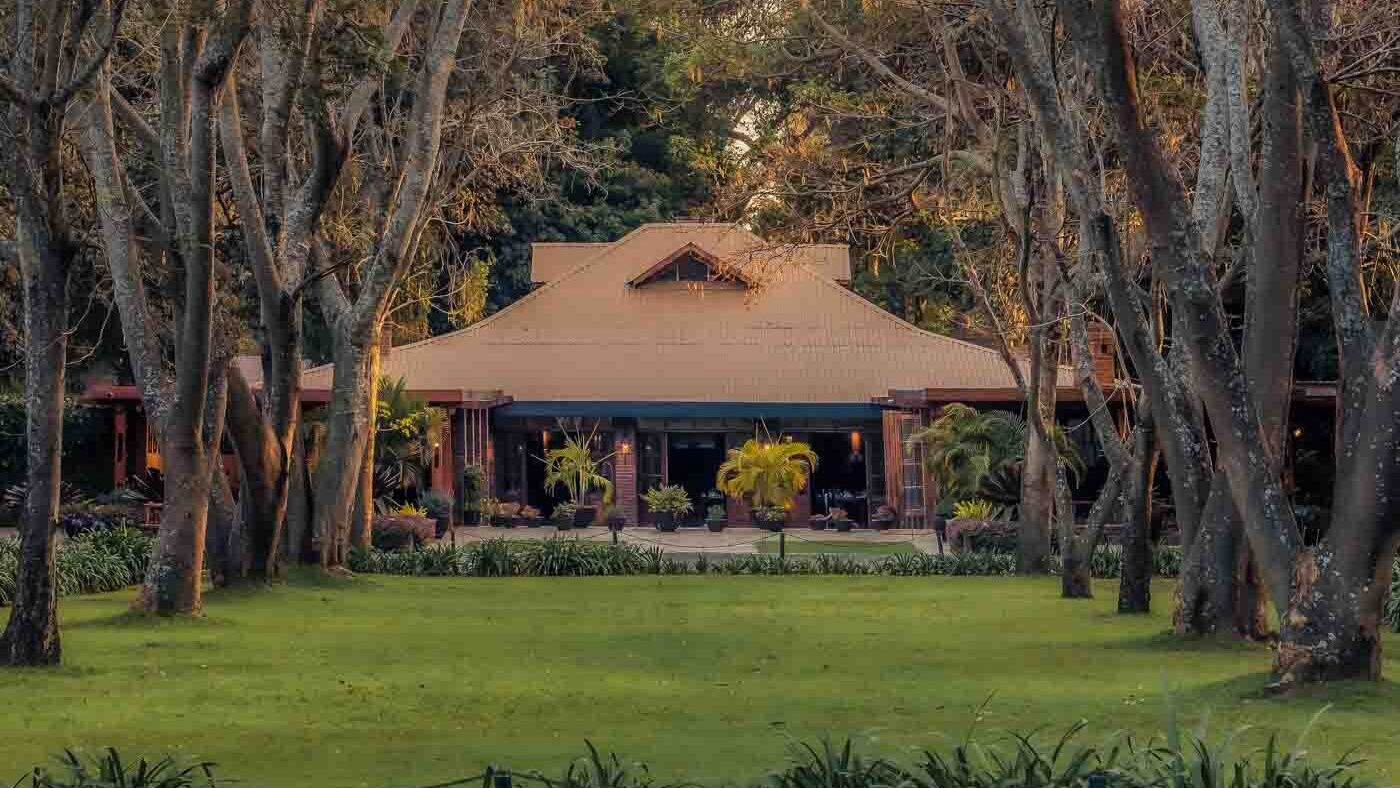
From Arusha, we took to the skies with SkySafari bound for Tarangire. Our private plane offered beautiful views and felt like a “sky drive” or a “game fly” as we spotted herds of animals below. Upon landing, giraffes threaded through the brush, elephants cooled off under ancient baobab trees, and darling dik diks (the smallest antelope species) scurried about.
Tarangire is a haven for wildlife; more than 3,000 elephants—one of the largest populations in East Africa—roam the bush. Our guide, Moses, pointed out that the African elephant’s ear looks like a map of Africa! And for bird lovers, it’s a paradise; more than 550 species fill the swamps and skies, their calls creating an ever-present symphony.
Elewana Treetops lives up to its name: the main lodge—home to the dining room, lounge, and reception—is built around an 800-year-old baobab tree, its branches piercing the roof and reaching toward the expansive blue sky. Our spacious standalone “treetop” suite combined natural materials with contemporary Africana décor and featured a decadent bathroom with a silver-crowned shower overlooking miles of golden savannah. From the balcony, we watched birds wheel overhead and monkeys swing through the branches.
One day, we walked with a Maasai guide on a morning safari, dined in the bush for a beautiful lunch, and enjoyed Sundowners (sunset cocktails) atop Sunset Hill, where the sky turned to fire over a breathtaking landscape. As the sun dipped below the horizon, a little family of warthogs hurried home. It never failed that every time we spotted a warthog, someone in our group would excitedly exclaim, “Pumba,” a nod to The Lion King.
Another morning, we visited a Maasai village where my daughter quickly became a favorite among the children, who were particularly mesmerized by her rings. We danced with the women and browsed beautiful, beaded jewelry and handmade carvings.
At our last Tarangire meal, the staff led us all in a farewell song before we headed to the fire pit for the chef’s glorious take on s’mores.
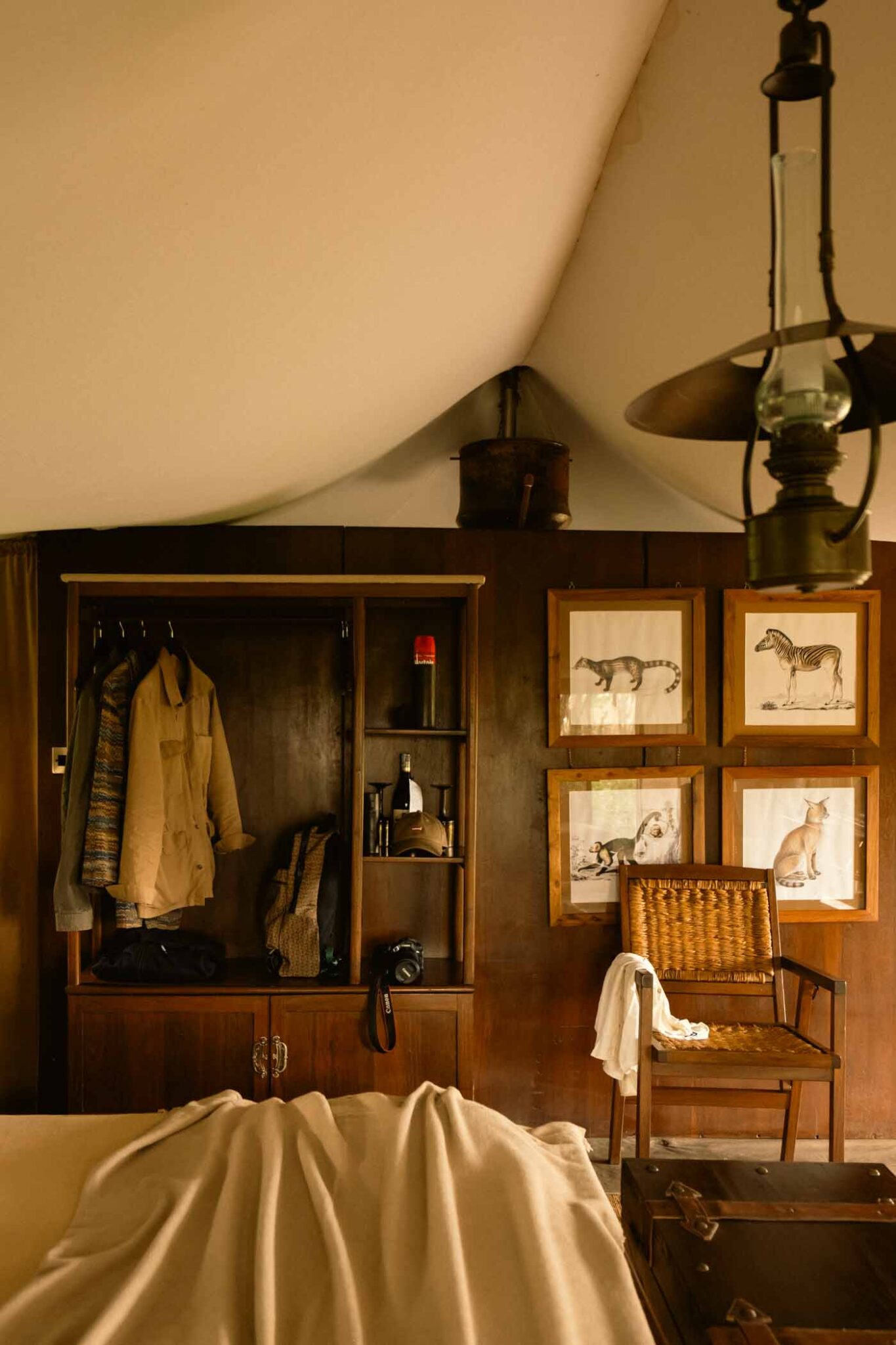
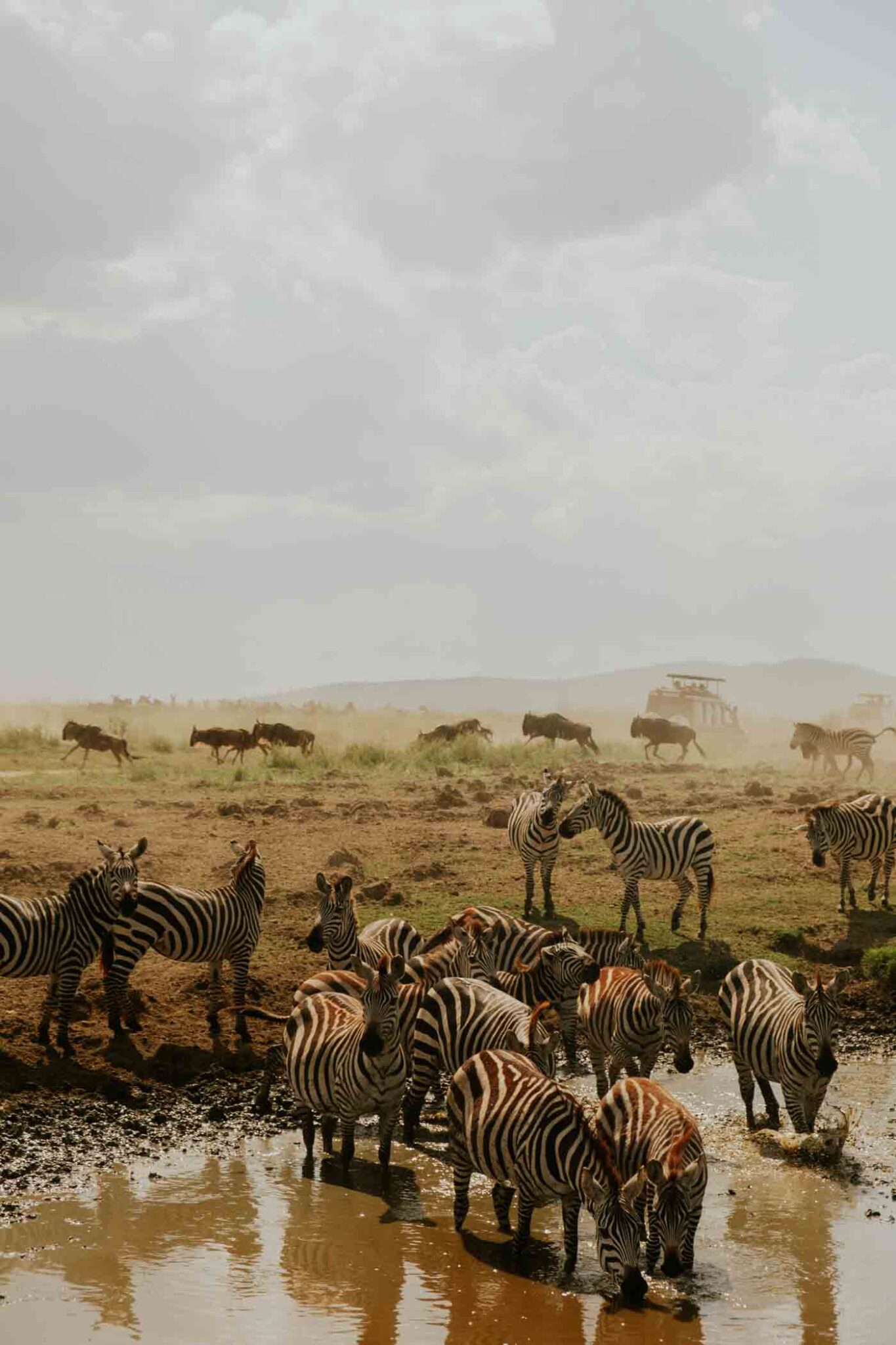
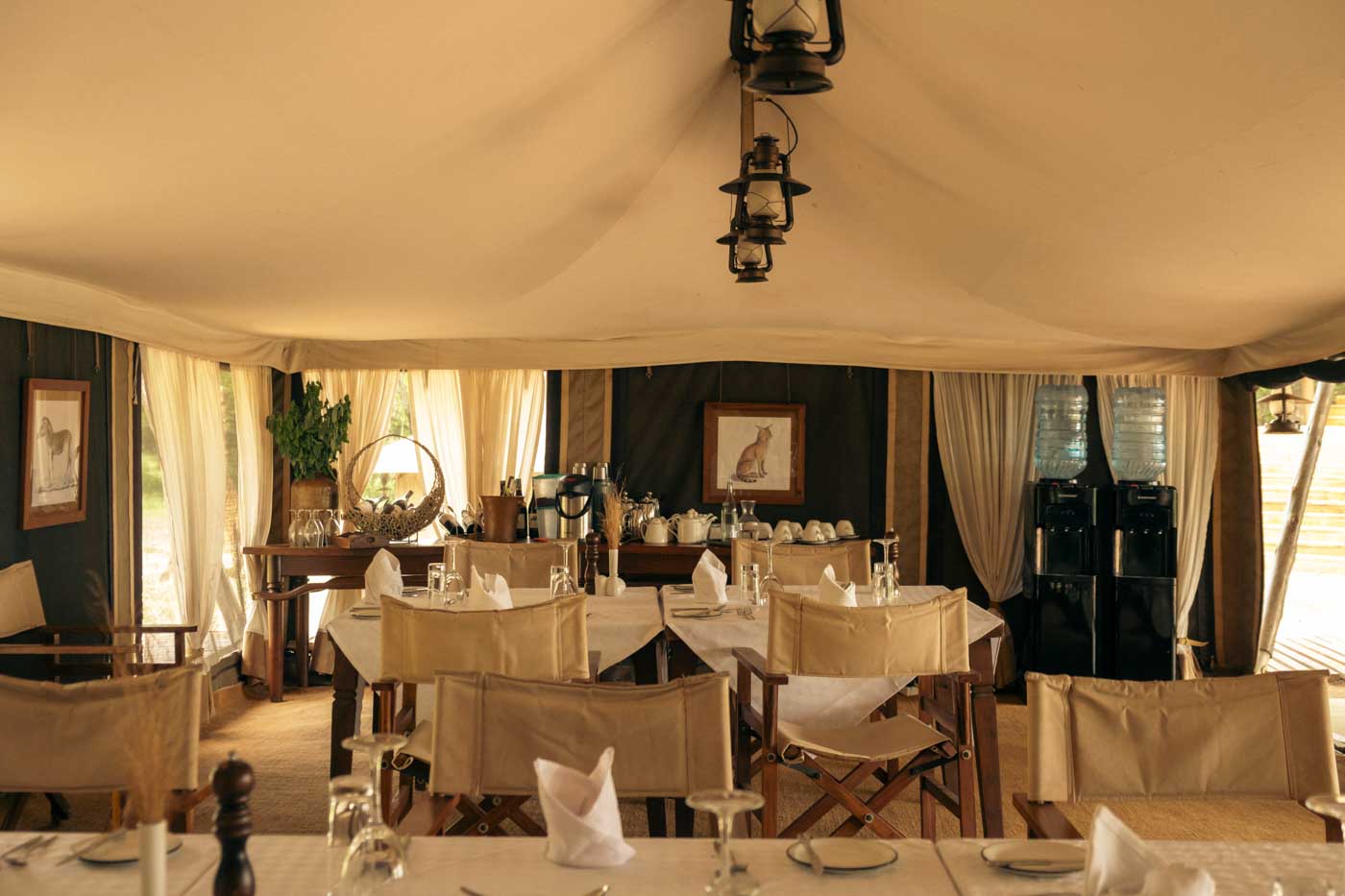
Taking to the skies again, we looked down on perfectly circular Maasai villages nestled in the bush, built by a people who have coexisted with wildlife for generations. We landed at the “busiest” of our bush airports, where our guide Chambo welcomed us with a breakfast on the hood of our open-air Land Rover and an introduction to the Serengeti. The area is vast beyond comprehension—14,763 square kilometers of rolling plains and scattered kopjes. It is no surprise that the word “Serengeti” translates to “endless plain” in Maasai.
Nowhere was the green season’s presence more evident than in the Serengeti. Leaving the airport, Chambo expertly navigated the flooded roads with a thrilling mix of skids and splashes—equal parts terrifying and exhilarating. Despite the challenging terrain, the scenery was lush, electric, and alive with animals and birds, especially the dazzling blue starlings. The soil had shifted from the red hues of Tarangire to a rich brown, marking the subtle change in landscape.
Our first wildlife sighting was a massive watering hole teeming with hippos. Slightly jarring, however, was the sight of two enormous crocodiles feasting on the carcass of a hippo that had recently met its demise. I was struck by how unbothered the rest of the pod seemed—frolicking nearby, some even floating on their backs, their stocky legs poking playfully out of the water. It was a wild and unforgettable welcome to the Serengeti.
Shortly after experiencing that circle-of-life moment, we arrived at our new camp. Set on a hilltop with sweeping views, Elewana Serengeti Pioneer Camp feels like a throwback to another era. With canvas tents inspired by 1930s safari explorers—think steamer trunks, writing desks, and framed sepia prints—it blends nostalgia with luxury. One thoroughly modern touch, however, is the camp’s dedication to a “zero footprint” philosophy, allowing guests to experience nature intimately while treading lightly on the land.
Each day brought new wonders. One morning, we witnessed three lions feasting on a wildebeest, zebras frolicking across the plains, and elephants moving with a slow, meditative grace (their footsteps so soft it feels as if the earth is holding its breath). Tanzania’s lions are known tree-climbers; seeing them splayed in the branches of sausage trees that dangle fruit-like ornaments—tails swinging, paws dangling—was somehow both majestic and endearing.
One morning, from a respectful distance, we observed a male elephant in musth—massive and moody. Giraffes towered gracefully in groups, ostriches bobbed across the plains, and baboons swung through yellow acacia trees (one leaping onto our truck).
Another afternoon, excitement rippled through our group when a member called out “cheetah”—only to realize it was a serval and not its more elusive relative. That same day, two seated warthogs were misidentified as noble lionesses. That’s one of the great joys of safari: the thrill of spotting wildlife and the playful mix-ups along the way.
We also frequently encountered “Tanzanian roadblocks”—a wall of wildebeest, a giraffe crossing at its own pace, or elephants staging a full-blown mud bath right in the middle of the track. The only thing to do was watch, wait, and revel in the moment.
A true treat was glimpsing the early stirrings of the Great Migration—herds on the move, calves in tow, the air alive with sound and dust. Our guide joked that wildebeests are like “spare parts” animals: a grasshopper’s face, a hyena’s body, an antelope’s legs, a giraffe’s tail, and a lion’s mane all pieced together.
At dusk, the Serengeti glowed golden. Nights came alive with the guttural calls of big cats and the rustling of hyenas denning just beneath our rocky outcropping. By dawn, the view from the reception felt nothing short of spiritual.
The Serengeti wasn’t merely beautiful—it was awe-inspiring.
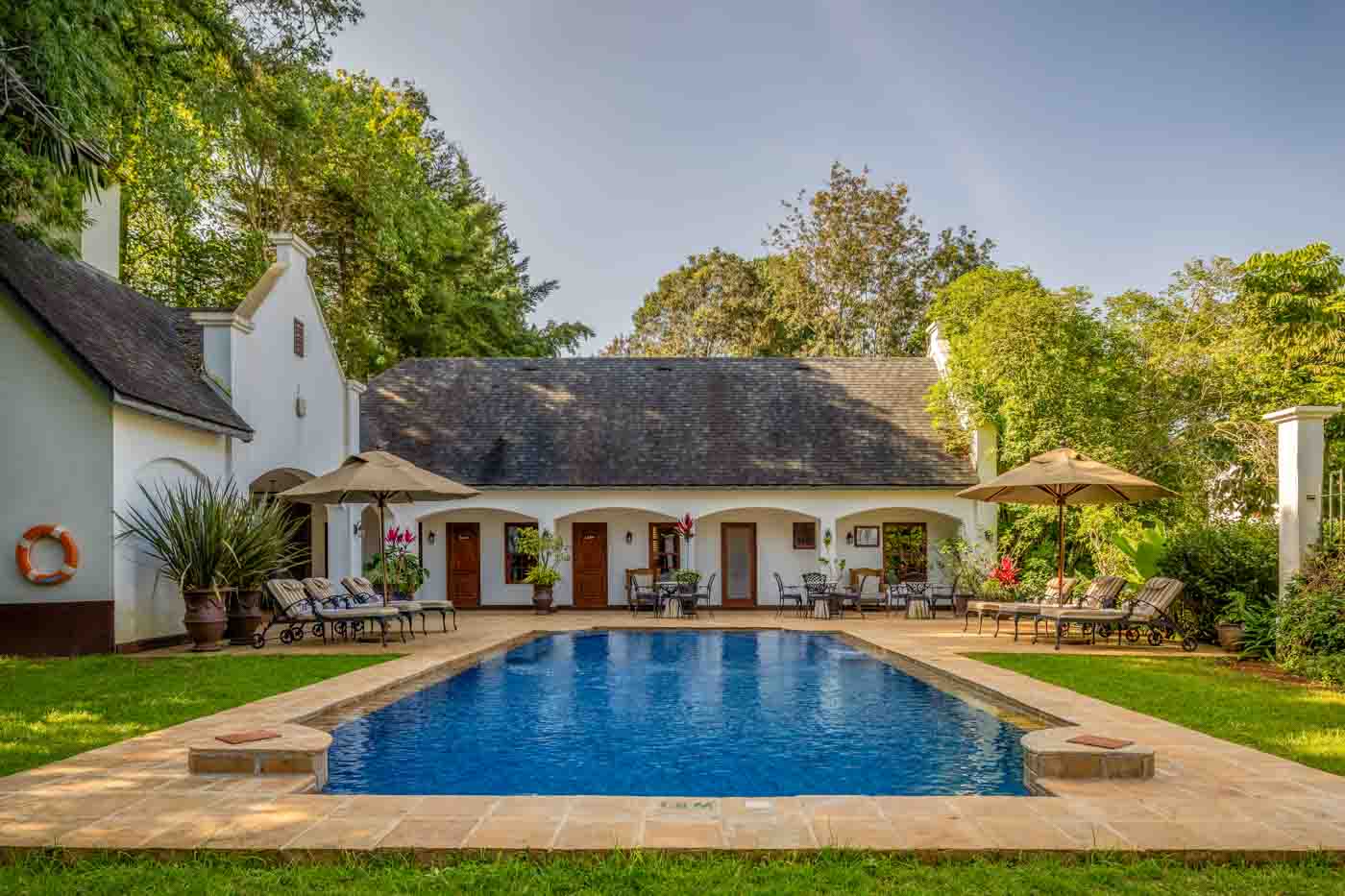
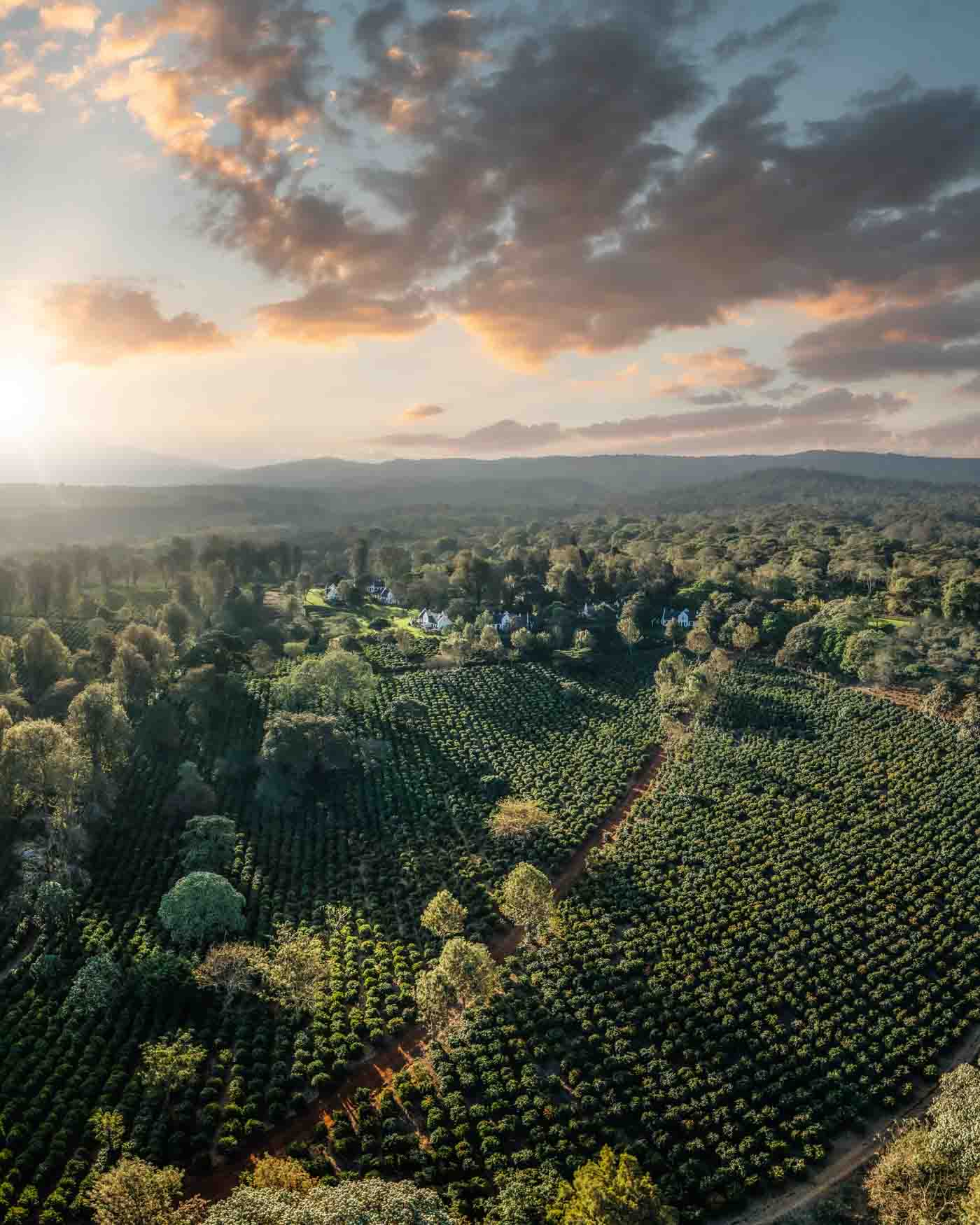
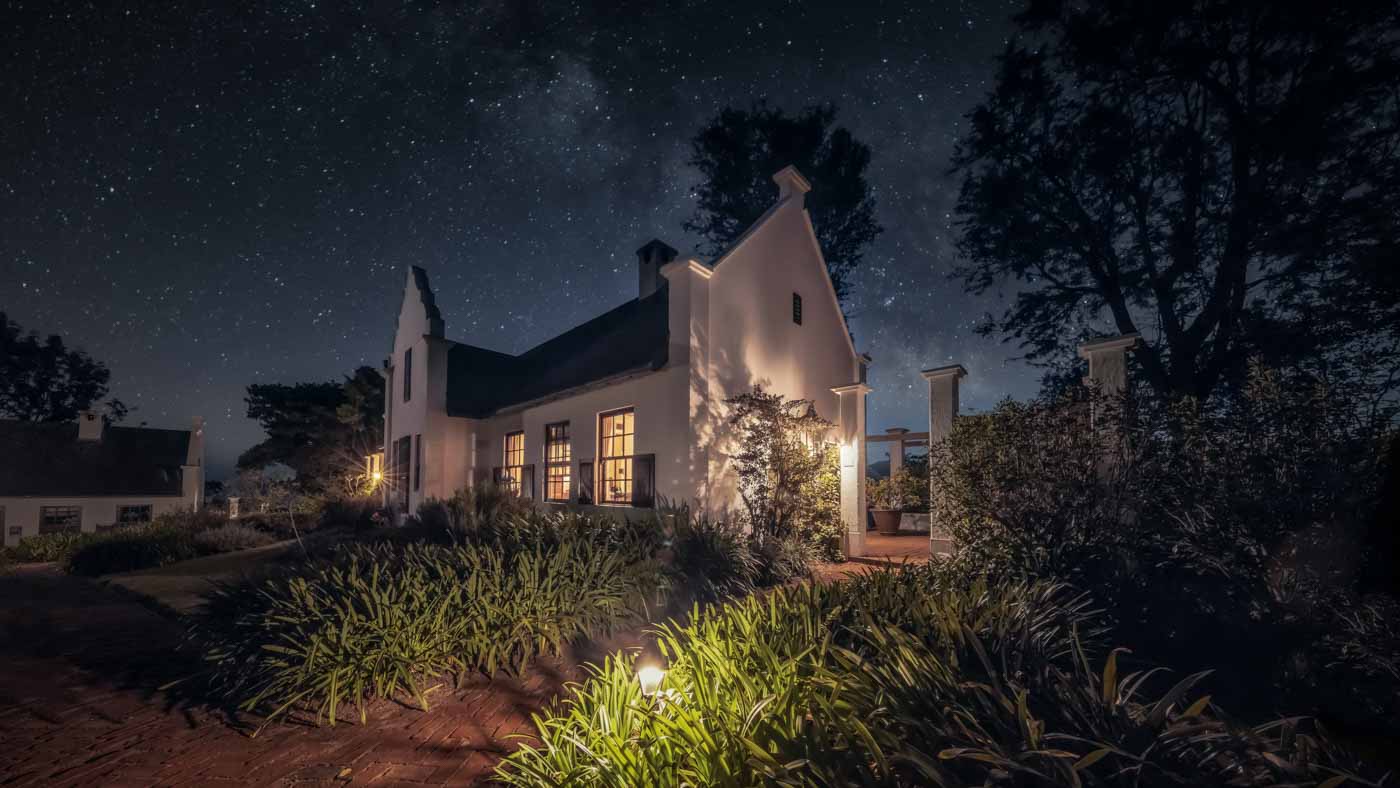
Hopping back on our comfortable SkySafari plane for a brief 45-minute flight, we enjoyed magnificent views of the Ngorongoro Crater. This UNESCO-listed sanctuary, shaped by ancient volcanic activity, is the largest intact caldera on Earth and a remarkable haven of biodiversity.
Our accommodation was an opulent estate nestled in the highlands, with whitewashed cottages dotting manicured grounds surrounded by coffee plantations. With its Cape Dutch architecture, roaring fireplaces, and elegant gardens, the estate felt like a European compound.
The Manor boasts a full-service spa, pool, charming horse stables, and plantation rides. As horses grazed nearby, we often relaxed in Adirondack chairs overlooking the vast vegetable garden.
Inside our cottage, a wood-burning fireplace crackled beneath vaulted ceilings, a carafe of sherry waited on a tray, and the bathroom was palatial.
Refreshed and ready the next morning, we descended the switchback roads into the Ngorongoro Crater, where more than 30,000 animals thrive.
We saw lounging lions, scores of elephants, pink flamingos wading in Lake Magadi, and seven black rhinos—including a baby. On a previous trip to Botswana, I’d been told rhinos there were under military protection due to poaching. To see them move so freely in Tanzania felt remarkable.
We ended our crater safari with a gourmet picnic beside a hippo-filled lake, the air full of the bush’s musical calls. That evening, a rose-scented bath awaited in our Victorian tub, windows open to the crisp evening air.
On our last night, we dined fireside in the Manor’s grand dining room, savoring a five-course tasting menu. The night culminated with a wonderful serenade, followed by a dance-off between the staff and fellow travelers—a heartfelt end to an extraordinary stay.
Our return by plane to Arusha was bittersweet as it meant our private plane adventures and time in Tanzania were coming to an end. However, we were so happy to see Simon, our Arusha butler, and partake once again in the generous and delicious breakfast served at the reception building’s Bistro Café. For our final dinner in Tanzania, we opted for a garden-side meal where we dined amid the aroma of coffee beans and the chattering of monkeys.
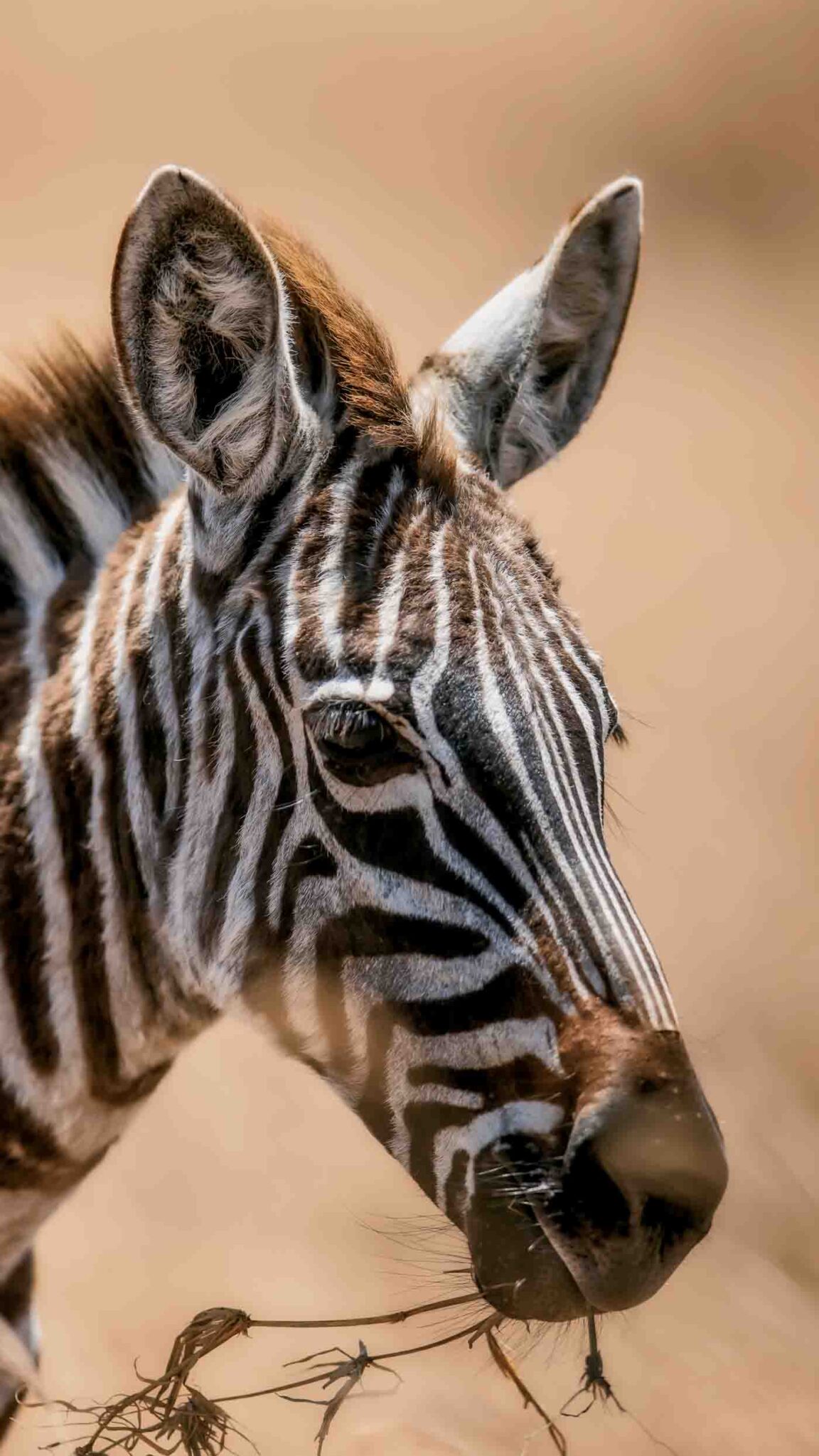
From coffee plantation to treetop perch, from vintage-style tent to European-style manor, each Elewana property has its own unique charm. Yet across these varied settings, two things remained constant—the exceptional cuisine and impeccable service. Every meal was fresh, flavorful, and artfully presented, and at each stop, the gracious staff and attentive butlers made us feel not just welcomed but pampered.
As we boarded our flight home, the rhythm of Tanzania lingered within us. We came seeking adventure and left with something deeper: reverence for the beauty and interconnectedness of nature.
So, say jambo (“hello” in Swahili) to a land where everything is taken poli poli (“slowly, slowly”) and where each day is met with a heartfelt asante (“thank you”). Hakuna matata (“no worries”), indeed.
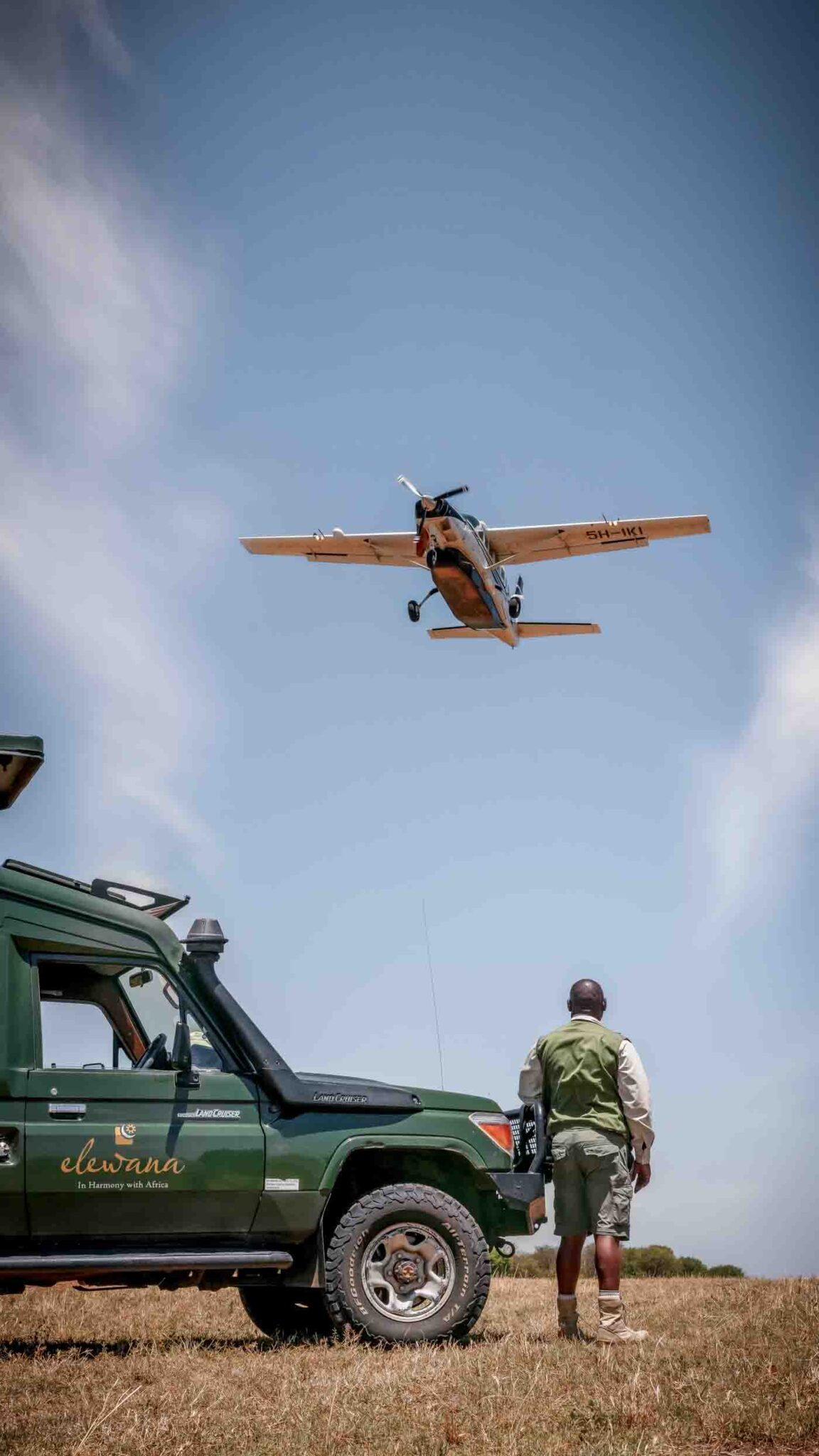
We found SkySafari to be a seamless, luxurious way to experience Tanzania that maximized our time in the bush. With fast-track airport service, private plane travel, and hand-picked camps, every detail was expertly managed. Even better? SkySafari supports community-led initiatives through the Land & Life Foundation, which ensures that tourism delivers tangible benefits by building schools and clinics, funding conservation education for local children, mitigating human-wildlife conflict, and helping safeguard East Africa’s iconic landscapes for generations to come.
For more information, visit elewanacollection.com and skysafari.com.
Sign Up for the JWC Media Email